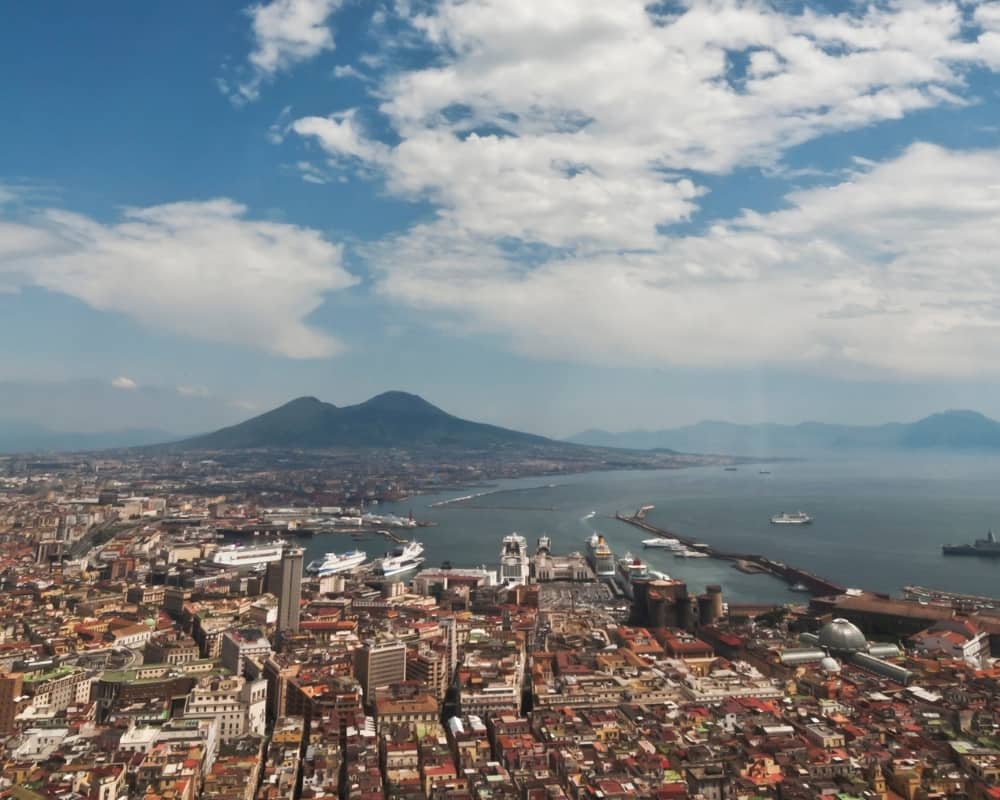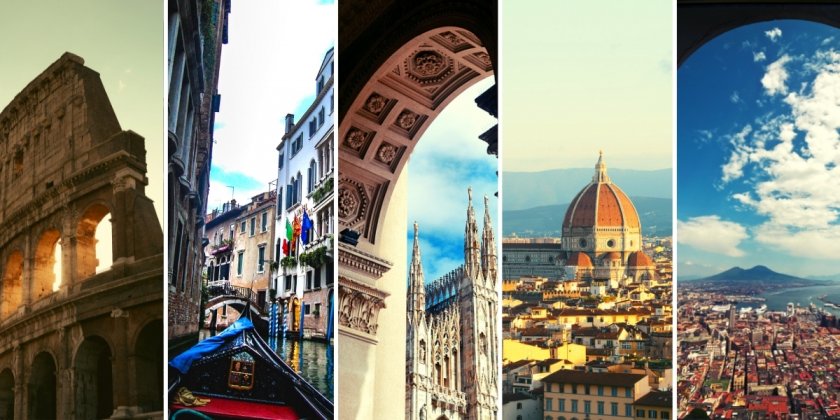Exploring Italy undoubtedly means being breathless in front of the beautiful cities that have their roots in antiquity and at the same time get excited in front of medieval villages or coastal cities with a unique charm.
Sea, mountains, forests, plains, and many more, even metropolises although different from those of America or Asian megalopolises. Great cities, made up of ancient and modern histories that blend, historic centers of great prestige and urban peripheries where life can also be difficult but where you rarely get bored or don't help each other, this is also Italy.
A face of Italy that can be a starting point on which to dwell and deepen.
Five are the most loved cities by visitors (and for this reason also the most chosen) of Italy more or less since ever, and this for different reasons: Rome, Florence, Venice, Naples, and Milan.

Rome, the eternal city, endless with the charm of the old
Rome is certainly one of the most visited and loved cities by tourists in Italy. It may be for its image as the capital of one of the oldest empires in Europe or even just for its countless monuments. It seems in fact that at every step the visitor to Rome always has some wonder to look at, discover or learn about, making these beauties seem truly endless.
Ruins, Churches, Temples, Arches of Triumph and not only that, even dreamy noble architecture and that typical Italian elegance that makes Rome "a good living room, a great museum to cross on tiptoe" as Alberto Sordi, one of the greatest interpreters of Italian cinema, said. Definitely one of the cities in the world to visit at least once in a lifetime.
And then Rome, a city full of surprises and treasures hidden in every corner; in fact, every time you go around the city with a tourist map, this becomes only a faint indication because it is the city that overwhelms us with all the energy of its paths, even those that are off the beaten track.
You begin to notice churches and palaces, squares and streets even outside the mainstream and all this increases the desire to get lost, to explore, to enter a different world. You are landing on planet Rome, a place suspended timelessly between a glorious past and (hopefully) an increasingly bright future.
Florence, the city of the Renaissance and "impossible" architecture
Florence. Among all Italian cities, this is probably the most "human scale", where every street, square, or building is always comfortable to the eye and never excessively monumental, according to the construction methods of the Renaissance.
The city is the daughter of this extraordinary period of Italian history; a time when, in a relatively short period, it presented the world with some of the greatest artists and architects in European and Western history. In less than 130 years there was an unspeakable exploit of beauty and genius with an enormous contribution that this city made to Italy and the world.
Think of Donatello, Brunelleschi, or Botticelli among these illustrious citizens, but also Masaccio, Michelangelo, Raphael, or Leonardo da Vinci who, even if they were not born in the city, have given great prestige with their presence and their works.
Think of the architectures considered impossible to realize by the engineering of the time, such as the great dome of the Cathedral of Santa Maria del Fiore. Never before were such heights and greatnesses reached in supporting what was a true prodigy of architecture: we are talking about the very first years of the 1400s when Filippo Brunelleschi thought of an innovative double dome, self-supporting during construction, which quickly became one of the most important constructive works ever built in Italy.
Venice, the embrace with its lagoon and its millenary art
It only takes a few minutes inside to understand how its beauty is infinitely different from that of other cities. Hundreds of small islands embraced by the Venetian Lagoon are what support all this charm and gracefulness from over 2 thousand years of history, 1100 of which passed as the capital of a thriving autonomous entity: the Serenissima Republic of Venice.
Besides the Serenissima, it is also known as the Dominant or the Queen of the Adriatic. This is because it was a great political innovation, a form of government that still did not exist in the rest of Italy.
Its economic greatness, together with a series of other factors, allowed the development of a "Renaissance" of the arts that were very different from that of Florence.
Here, both because of the different relationships with foreign countries and because of climatic factors different from those in Tuscany, there developed what we know today as the Venetian school of color, in which painters had gathered the plastic lesson of Donatello enriched by the archaeological knowledge of Mantegna and above all by the oil painting of Antonello da Messina. Even today is known at least among scholars of art its opposition to Florence (city of the drawing), in short, you just have to get lost in the great city of painting and color.
Naples, the city of cosmopolitan culture bathed by the sea

Surely a city with an ancient history, thousands of years, founded by Greek settlers on a fertile area for the presence of Vesuvius, lush nature, and swept by the wind and the sea. Besides being poetic and aesthetic, its sea has been a very important resource for the economic growth of the city and trade. Just think that first, the Greeks and then the Romans were great masters of the sea, connoisseurs, and creators of specific trade routes with the then known world.
Today if you walk around the streets of the old town you can see how this great culture has remained perfectly preserved in the structure of the city. It is enough to imagine that the ancient Greek layout and even parts of the ancient city walls that protected the city, can still be seen today in Piazza Bellini, in a good state of preservation.
The vertical stratification of Naples shows us all the populations that have inhabited or dominated this place among Greeks, Romans, Angevins, Aragonese, Spaniards, Poles. The streets of Naples are teeming with buildings in which you can see fusions of styles and artistic currents. Choose Naples if you want to lose yourself in one of the oldest cosmopolitan cities in the world.
Milan, the Italian metropolis that never sleeps
Finally, here we are in Milan, the city where modern architecture blends with the ancient. The city of fashion, design, business, and Leonardo da Vinci. Yes, because in this city there is one of the most iconic works of the great Tuscan master: we are talking about the refectory of the church of Santa Maria Delle Grazie, also known as "The Last Supper".
It is certainly the economic and financial center of the country with its cutting-edge infrastructure and its professionals coming from all over Italy and the world. Milan, however, is not the only economy, but it can also be considered a city of art on a par with the others. This is due to the presence of wonderful ancient and modern museum collections, just to mention: Pinacoteca di Brera, Pinacoteca Ambrosiana, Museums of Castello Sforzesco (where is the Pietà Rondanini by Michelangelo), the Gallery of Modern Art GAM, the Poldi Pezzoli Museum, the Museum of the Opera del Duomo, the Hangar Bicocca and many others.
Choose Milan if you want to immerse yourself in the history of this country through a modern, fresh and multicultural approach.
About the author
Written on 31/07/2021



Emanuele Castellano
Exploring Italy undoubtedly means being breathless in front of the beautiful cities that have their roots in antiquity and at the same time get excited in front of medieval villages or coastal cities with a unique charm.